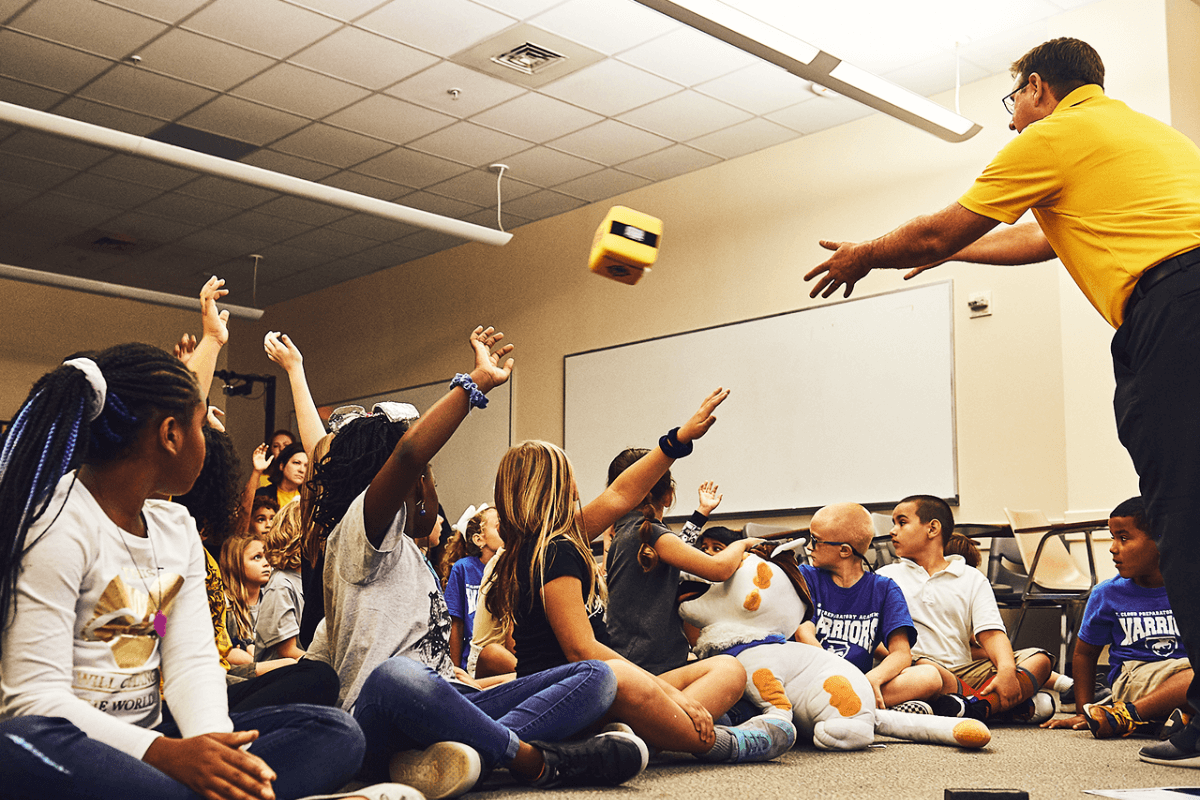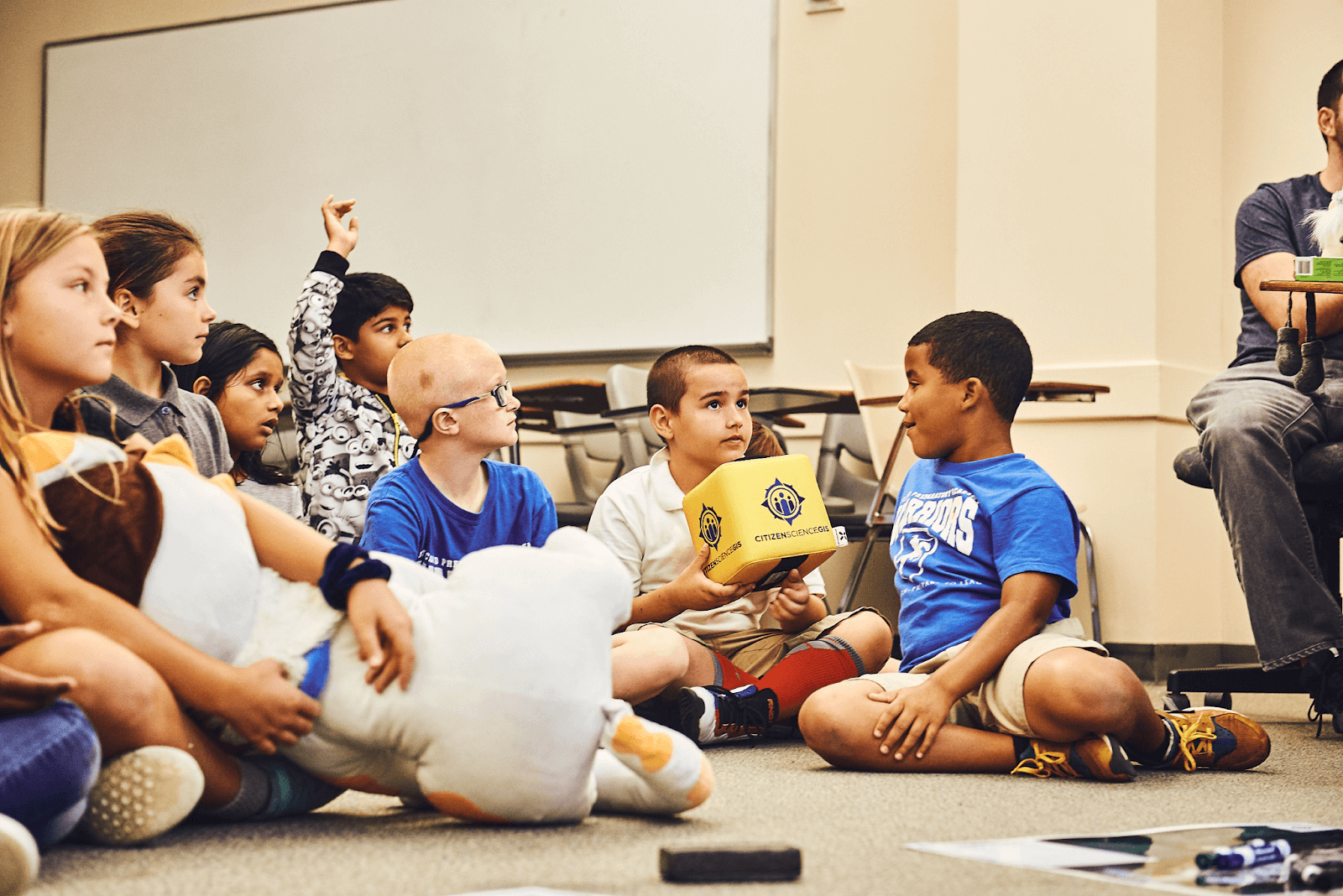What is active learning?
Active learning is one of the hottest topics in education. But what does active learning actually entail and what does this mean for students?

Active learning is getting students to actively participate in their lessons. Whilst this might seem a no-brainer for the modern classroom, many educational institutions continue to struggle with active student engagement in lessons.
50 years ago, group projects, discussion sessions, learning games were rarely, if ever, used in class. Students would come to school and listen to teachers deliver their sermons, which had been the way teaching was practised for centuries before. Unfortunately, even though student participation is actively encouraged in many classes as a good thing, the legacy of archaic teaching methods continues to cast a long shadow on the education sector.
That being said, the active learning movement is rapidly gaining in popularity. Increasingly, teachers and curriculum coordinators across the globe are seeking to make active engagement and participation in class a fundamental piece of the learning experience. In this article, we'll take a closer look at active learning, explore some of the benefits, and explore how technology is encouraging the wider adoption of active learning practices worldwide.
What is active learning?
Active learning is a method of instruction that engages students to participate in the lesson through a variety of activities. It's typically contrasted with the traditional “sage on the stage” learning model where students passively absorb knowledge presented by the teacher.
In the latter model, participation is typically limited to several direct questions posed by a handful of students throughout the lesson. Active learning, on the other hand, involves the entire class, pushing all students to produce some individual or collective input. As such, active learning activities can range from simple individual exercises, e.g. short text writing, to complex group projects such as class-wide interactive games.
The twin goals of active learning are to have students earnestly engage with the material through its analysis and evaluation and to give all students the opportunity to participate in class.
4 benefits of active learning
Active learning isn't always something that happens organically. Teachers need to purposefully plan, prepare, and integrate activities into their lesson plans. While this may sound like extra work for an already busy teacher, the educational benefits for the students are significant.
Let's take a look at 4 benefits of active learning.

Deep engagement with content
By the time you're reading this, you might already be zoning out. Some of you might not even be able to recite what the twin goals of active learning are without scrolling back up, despite reading about it 2 paragraphs ago.
It's easy to consume content without engaging in it, but this can hurt retention and understanding, which is a common issue with the traditional one-directional teaching model. The Learning pyramid learning retention model suggests that a meagre 5% of information is retained when listening, and only 10% when reading. The number goes up to 50% and higher when active learning is practised.
Active learning pushes a student to process information by demanding a deliberate response to content, thus improving comprehension.
Development of higher-level skills
Can you come up with 2 ideas for active learning activities that have not yet been mentioned in this article?
You probably can and in doing so you put your critical thinking and reasoning skills to use to identify patterns, understand the core principles, and produce a result.
Problem-solving, critical thinking, creativity, adaptability are all key competencies that go under-developed in scenarios where content delivery is seen as the sole goal. Proper information analysis and engagement are of particular importance in the 21st century, when our day-to-day increasingly revolves around content consumption.
Collaboration
Collaboration is a cornerstone of active learning, with group projects and pair tasks as some of the most popular activities. Working together with friends and peers improves interpersonal skills, as well as teaches students how to rely on others, manage work in teams, and cooperate to achieve a shared goal, all of which are essential skills for succeeding in the modern work environment.

Inclusion
Active learning demands class-wide participation, engaging diligent and uncooperative students alike. It also gives a platform to the more reserved students that might otherwise choose to remain silent, even if they struggle to keep up with the material.
Additionally, teachers gain the opportunity to gain quick insights on the level of individual students, without the use of lengthy tests, proactively identifying who could benefit from assistance and providing it early to ensure no student gets left behind.
How technology is enhancing active learning
Before the pandemic, the most advanced piece of technology in most classrooms was the smartphone in a student's pocket. This is indicative of the growing rift between the learning experience and the outside world, where technology literacy is muscling its way to the top of essential competencies, while it remains an afterthought in most classrooms.
Surveys report fewer than half of students believing in-class material to be relevant outside of school, and antiquated teaching methods don't help either.
As such, integrating technology into the classrooms can enhance the relevance of schoolwork for students, and often naturally leads to a basic level of active learning. From doing PowerPoint presentations in class to interactive Q&A sessions in hybrid classrooms to group projects with Zoom Breakout sessions in fully remote learning environments, technology can spruce up lessons, while ensuring students learn how to make use of the technology itself, which is becoming an increasingly in-demand ability in the modern workplace.
Technology can also advance the other benefits—engagement, collaboration, and inclusion—of active learning. A good example of this is the throwable Catchbox microphone which is, among other things, often put to use in Q&A sessions in classrooms around the world. The soft wireless microphone can be thrown between students as they take turns responding to questions and asking their own. As they speak, the voices of students are amplified over the classroom's speaker system, giving even the quietest students a platform to share their knowledge in a powerful way, fostering inclusivity. Plus, students find the act of throwing the microphone to your friend deeply satisfying.
See how Shaftesbury School Catchbox to used to break the ice at the start of lessons, and also to reflect on topics at the end of the class in this video.

Conclusion
Today, education can no longer purely rely on methods that are over half a millennium old. In part, it's because we now understand that these lecture-style methods are sub-optimal if the goal is to have students thrive academically. Also, the current global landscape demands skills and experiences which passive learning cannot impart.
Active learning on its own is unlikely to solve all these challenges. But it's certainly a strong step forward, made only more powerful when technology is applied.

Speak to our expert team
Get in touch
Transform your hybrid learning setup & improve student reintegration with Catchbox. Our microphone solutions are eligible for funding under the CARES act and American Rescue Plan. Speak to our team for more information.